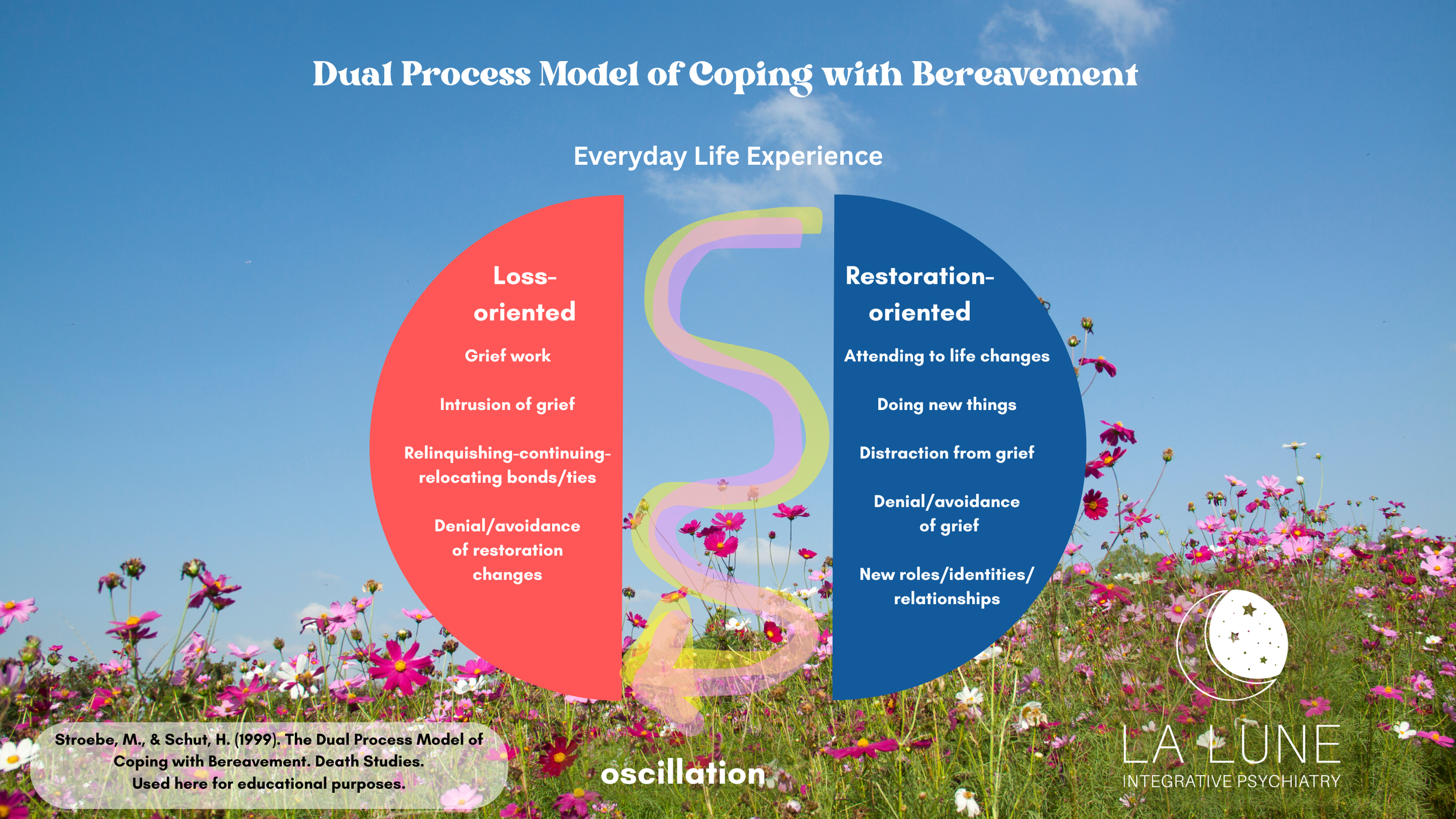Burnout Inside and Out: When Toxic Work or Lack of Boundaries Take Their Toll
Burnout is real — and it’s not always something we can simply fix by changing jobs or taking time off. It’s rarely acknowledged in a culture that celebrates constant striving and risk-taking, yet for many people, mobility — like switching careers or starting a business — depends on a level of financial security that isn’t always accessible. That kind of stability can be just as vital to mental health as rest or self-care.
With that said, healing is possible — often beginning not with sweeping life changes, but with small shifts in awareness, boundaries, and compassion for yourself. Recovery also means reclaiming a sense of control — and understanding what’s outside of it. Even if your current environment feels toxic or unsustainable, you can start making gradual, intentional changes where you do have influence, while giving yourself time to prepare for larger transitions — like changing jobs or pursuing new paths — in a way that feels financially and emotionally secure.
Burnout often develops when external pressures like unrealistic workloads or toxic environments collide with internal patterns such as over-responsibility, perfectionism, or fear of letting others down. In other words, it’s both what happens to us and what happens within us — at the intersection of circumstance and inner conflict.
Left unchecked, that intersection can trigger biochemical changes in the brain and body that look — and feel — a lot like anxiety or depression (Davis, Holmes, Pietrzak, & Esterlis, 2017).
How Burnout Imitates Anxiety and Mood Disorders
Burnout isn’t just emotional — it’s physical. Ongoing stress activates the body’s main stress pathway, the hypothalamic–pituitary–adrenal (HPA) axis, which releases hormones like cortisol and adrenocorticotropic hormone (ACTH). When this system stays activated for too long, it can disrupt your body’s natural stress rhythm, raise levels of inflammation markers such as interleukin-6 (IL-6) and C-reactive protein (CRP), and lower brain-derived neurotrophic factor (BDNF) — a molecule that supports mood stability, focus, and cognitive function.
In a systematic review of 37 studies, Noushad et al. (2021) found that chronic stress is associated with measurable biological changes across multiple systems — including altered cortisol and ACTH activity, reduced BDNF, higher inflammatory and metabolic markers, and shifts in immune function. These physiological changes can impair emotional regulation, weaken the body’s stress resilience, and mirror the biological patterns often seen in anxiety and depression — illustrating that burnout affects both mind and body.
These changes overlap with what clinicians see in anxiety disorders, major depressive disorder, and insomnia:
Racing thoughts and restlessness
Emotional numbness or irritability
Sleep fragmentation
Loss of motivation or pleasure
Physical symptoms like headaches, fatigue, or gut changes
So while it may start as “I’m just burned out,” your neurochemistry may already be mirroring a clinical anxiety or mood disorder — one that may benefit from psychotherapy, medication, and restorative lifestyle changes together.
External Pressures: When Work Culture Turns Toxic
A toxic work environment isn’t simply demanding. It’s one that continually violates boundaries, values, or fairness.
Examples include:
Unrealistic workloads or constant urgency
Unclear expectations or moving targets
Bullying, gaslighting, or exclusion
Lack of recognition or support
A 2021 meta-analysis linked such environments with elevated biomarkers of chronic stress and higher risk of depression and cardiovascular disease (Salvagioni et al., 2017).
These settings keep your stress system activated long after you’ve logged off, which is why “a weekend off” doesn’t solve the exhaustion.
Internal Contributors: When Saying No Feels Unsafe
Even in a healthy workplace, burnout can take root when your internal rules make it hard to set limits.
You may recognize yourself if you:
Say yes to extra tasks even when overwhelmed
Equate worth with productivity
Feel guilty resting
Fear conflict or rejection if you assert needs
These patterns often have deep roots — sometimes in early experiences where love or safety felt tied to achievement or compliance, and sometimes in coping styles that once helped you succeed but no longer serve you in your current season of life. In adulthood, they can lead to boundary collapse and chronic self-overriding that feels exhausting even in otherwise supportive environments.
For many people, boundaries can feel mean, selfish, or even dangerous — especially if they were never modeled as acts of care or self-respect. But setting limits isn’t about pushing others away; it’s about staying connected without losing yourself. People who are able to recognize their needs and express boundaries clearly often find more steadiness, satisfaction, and emotional balance in their relationships and work. Through therapy and self-reflection, you can begin to rebuild this skill — learning to honor your own limits while still showing up with authenticity and care.
The Body Keeps the Burnout
Research by Noushad et al. (2021) and Salvagioni et al. (2017) shows that chronic stress and repeated boundary violations are linked to measurable biological changes across hormonal, immune, and metabolic systems. Over time, the nervous system can lose its ability to shift smoothly between states of “drive” and “rest,” allowing anxiety and low mood to take hold. At this stage, comprehensive care — including psychiatric evaluation, therapy, sleep restoration, and sometimes psychotropic medication — helps restore balance while you rebuild external and internal boundaries.
Communicating Boundaries Effectively
Setting boundaries isn’t selfish; it’s healthy. Yet, it’s one of the hardest things to do — especially if you fear job loss or financial instability.
Try these approaches:
Use neutral, specific language – “When last-minute requests come in, I feel overwhelmed. Can we plan deadlines earlier?”
Anchor to shared goals – “To maintain quality, I’ll need to focus on these three priorities.”
Separate self-worth from performance – Your value isn’t contingent on constant availability.
Rehearse small no’s – Decline minor requests first to build tolerance for assertiveness.
Plan financial safety nets – Stability supports boundary enforcement. Budgeting before a major change reduces panic and impulsivity.
Healing Burnout Holistically
Recovery means addressing both the system you’re in and the system within you:
Evaluate baseline labs (i.e. thyroid function and vitamin deficiencies), and optimize sleep.
Explore therapy modalities for boundary-setting, trauma, or perfectionism.
Consider short-term pharmacologic support if anxiety or depression impede progress.
Reconnect with restorative activities and relationships outside work.
Re-evaluate the alignment between your values and environment.
Burnout isn’t a personal flaw — it’s a signal from your mind and body that something in the equation is unsustainable.
Healing comes from adjusting both sides: reshaping external demands and understanding the internal rules that keep you in them.
Ready to recover from burnout—inside and out?
If you’ve noticed that work stress, poor sleep, or emotional exhaustion are starting to feel like anxiety or depression, you don’t have to face it alone.
Our board-certified providers specialize in holistic, evidence-based care for burnout, anxiety, and mood disorders. Whether you live in Washington, Oregon, Colorado, Arizona, or New Hampshire we can help you rebuild balance through tailored treatment, therapy, and lifestyle guidance.
Schedule a consultation today to start reclaiming your energy, boundaries, and peace of mind.
References
Davis, M. T., Holmes, S. E., Pietrzak, R. H., & Esterlis, I. (2017). Neurobiology of chronic stress-related psychiatric disorders: Evidence from molecular imaging studies. Chronic Stress (Thousand Oaks, Calif.), 1, 2470547017710916. https://doi.org/10.1177/2470547017710916
Noushad, S., Ahmed, S., Ansari, B., Mustafa, U.-H., Saleem, Y., & Hazrat, H. (2021). Physiological biomarkers of chronic stress: A systematic review. Biomolecules, 11(8), 1062. https://doi.org/10.3390/biom11081062
Salvagioni, D. A. J., Melanda, F. N., Mesas, A. E., González, A. D., Gabani, F. L., & Andrade, S. M. (2017). Physical, psychological and occupational consequences of job burnout: A systematic review. BMC Psychiatry, 17, 24. https://pmc.ncbi.nlm.nih.gov/articles/PMC5627926/
Disclaimer: This website does not provide medical advice and may be out of date. The information, including but not limited to text, PDFs, graphics, images, and other material contained on this website are for general educational purposes only. No material on this site is intended to be a substitute for professional medical advice, diagnosis, or treatment, and does not create a patient-doctor relationship. Always seek the advice of your qualified healthcare provider with any questions you may have regarding a medical condition, lifestyle or dietary changes, treatments, and before undertaking a new health care regimen. Never disregard professional medical advice or delay in seeking it because of something you have read on this website.



















